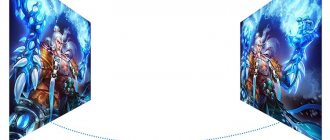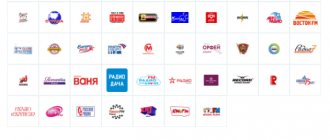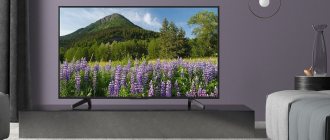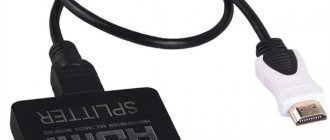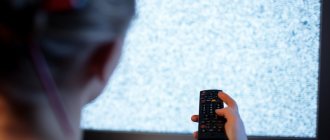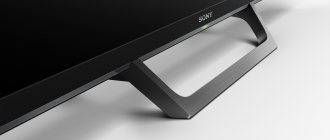Let’s be clear right away that the phrase “OLED TV service life” should only mean the durability of the OLED displays themselves, and not the TV (or monitor) as a whole. OLED technology is quite new and quite complex. As it turns out, the service life of devices with displays of this type has limitations.
The timing of correct operation of QDLED and OLED is given only on the basis of theoretical calculations. A similar example is a cast iron sewer pipe, the service life of which is 50 years. The same plastic pipe is considered more practical, more convenient and costs much less. However, no one can guarantee that it will also last 50 years. It’s just that 50 years have not yet passed since its release.
A similar thing is observed in OLED technology. The service life set by the developers has not yet passed. On the pages of the UltraHD website, we have already become acquainted with this technology in the article OLED and SUHD differences. However, we have not yet touched on the operating life of SUHD and OLED.
For the first time, OLED displays were used in mobile devices and were appreciated by consumers. Later, this technology was used to make monitor panels and televisions. OLED technology is the ability to control the backlight of each pixel. Now we just have to imagine that every LED has a life limit and it becomes clear why OLED backlights have a life limit.
After a signal is applied to an organic LED, it begins to glow under the influence of chemical processes occurring inside it. Long-term operation leads to the loss of the properties of the LED that were originally inherent in it. As a result, the LED will continue to glow, but not with its original brightness.
Organic LEDs OLED matrices
An important factor is that the OLED matrix consists of organic light-emitting diodes of different colors. The colors of these organic LEDs are red, green and blue. Doesn't this combination of colors remind you of the RGB system, where you can get any color from their combination?
It is also characteristic that the service life of LEDs with these colors is different. Moreover, the developments of the types of these LEDs are very different. The most stable color is green. It is followed (in terms of durability) by red, and blue is considered the most short-lived. Below are the durability parameters, from which it can be seen that the service life of the green LED is almost 9 times longer than the blue one.
Durability of OLED matrix pixels Durability of blue pixel - 15,000 hours.
The durability of the red pixel is 50,000 hours. The durability of the green pixel is 130,000 hours.
Remote control, Smart-TV and image settings
When buying a TV, sales consultants advise putting good batteries in the remote control (that’s why you need to run away from them, remember?). But it’s better to save money and install old ones that have been lying around in a desk drawer for two years. If they leak, it’s no problem, take the remote control apart and wash it with alcohol. And it’s okay that the warranty will end immediately - it’s for weaklings.
Smart-TV is generally a useless feature invented by marketers. You will be annoyed by the message “Please wait, the software is being updated, do not turn off the TV” that appears once a year on the screen. Immediately pull the plug out of the socket at this moment, you don’t need any software, and don’t care that the TV may not turn on later, maybe it will!
And in the 21st century there is no need to adjust the image at all, everything is already perfectly set up at the factory, and if any interference appears, you can hit the TV from above. When hit, vibration occurs, the contacts “make contact” better, because “electronics is the science of contacts”! Your grandfather and father knew this.
What is the service life of OLED
The service life of OLED TVs (or rather, their displays) is 30,000 hours. These are theoretical calculations, so it is customary to add an error of plus/minus 20% to 30,000 hours of service life. After playing with the calculator, we come to the conclusion that this value is equal to 1250 days, which is slightly less than three and a half years.
All this means that the OLED display can operate continuously for 30,000 hours. Therefore, if you watch TV every day for 12 hours, its service life will double (up to 7 years). Does this mean that the TV will stop working at the end of its lifespan? Not at all. Blue LEDs just won't work as brightly as they should. As a result, the color scheme will be somewhat disrupted.
If disruption of any color results in disruption of the color gamut, then how can a monitor/TV panel last twice as long as the blue pixel's longevity (15,000 hours)? Practice has shown that when operating an OLED TV display, blue LEDs are not constantly involved in operation. This “impermanence” is what increases the lifespan of an OLED display by up to two times. Factors that extend service life also include the brightness threshold set on the display. The lower it is, the slower the deterioration of the color gamut parameters will occur.
Selecting, purchasing and delivering a TV
The guides write that you need to pay a lot of attention to this, but this is nonsense. By the time you read all these guides on choosing and purchasing, you will break your eyes and your brain will be overloaded with unnecessary information. Therefore, we need to act more simply. I wanted to buy a new TV - I confidently walked into the store, quickly ran through the windows, chose the biggest and most beautiful one - and went to the checkout. Trust your intuition and emotions, they rarely fail.
And under no circumstances let yourself be intercepted by sales consultants; carefully line up your movement path between display cases. And if you do get caught, then say the magic phrase - I just want to watch - and look for the TV yourself.
Refuse discounts, bonuses, promotions and other things, as well as delivery. Why overpay for it? TVs are now lightweight - Xiaomi Mi TV 4S 55 , for example, weighs only 17 kg in the package, everyone can carry it home even without a car, on foot. And if you have a car, then it’s absolutely beautiful. True, a box 140 cm wide may not fit in the back seat, but then put it on the roof. The box is strong, it is not afraid of rain or snow.
What is the service life of QDLED
The principle of quantum dot QDLED is similar to OLED from a technological point of view. It differs in that at the moment the signal is given, ultra-small particles begin to emit light. The amount of light emitted by a particle is directly proportional to its size. It was discovered that some pixels are capable of blinking. This eventually leads to the loss of bright (original) radiation.
The second disadvantage of QD-LED technology is overheating of the display, which negatively affects the color gamut.
As for the service life of QDLED displays, the manufacturer designated the parameter 30,000 hours as the lower one. The upper parameter is considered to be 50,000 hours. Now all that remains is to wait about three years (like the promised one, which is expected the same amount of time) to find out in practice how accurate these calculations are. Service life of OLED TVs2016-10-06T00:00:04+03:00 ultrahdVideoVideo Let's immediately determine that the phrase 'Service life of OLED TVs' should only mean the durability of the OLED displays themselves, and not the TV (or monitor) as a whole. OLED technology is quite new and quite complex. As it turns out, the service life of devices with displays of this type has limitations. The time limits for correct operation of QDLED and OLED are given only...ultrahdultrahd AdministratorUltraHD
Assembly and installation of legs
The TV box will have legs or a frame that are screwed on from the bottom. If the bolts included in the kit are of different sizes, trust your intuition. You will immediately understand what to screw and where. If the bolt does not tighten or is very tight, simply apply force. We don’t recommend looking at the instruction manual - everything is printed in small print. By the time you find the text in Russian, a few precious seconds will pass that separate you from turning on the TV and the long-awaited football.
But the most important thing when assembling is to save the stickers on the edges of the screen! Firstly, they make the TV look much more expensive. Secondly, when you call your friends to show off your new TV, you can read the characteristics directly from the stickers. Well, really, shouldn’t you keep the instruction manual handy? By the way, it should be thrown out immediately, like other waste paper, not to mention a box one and a half meters wide - where should it be stored? And if something happens to the TV, you can wrap it in newspapers and tie it with twine, and then take it to the service center.
Best mid-range Sony TV
Model: Sony KDL
You have three options, 32 inch, 40 inch and 48.5 inch TV in this model. Let's take a look at the excellent qualities of this mid-range TV.
32 inch -KDL-32W653A
40 inch :KDL-40R353C
48.5-inch: KD-49XE8096
- Triluminos display
- X-Reality PRO engine.
- Excellent viewing angle.
- Bass subwoofer
- Slim design
- Enjoy YouTube and Netflix instantly as your Sony TV is compatible with both.
- X-Protection Pro
- USB and HDMI ports
- Screen mirroring function.
- Navigation in Russian.
Permission
The clarity of the image depends on the resolution of the matrix. The more dots the screen can display, the more detailed the picture will be. The SD format with a layout of 640 by 480 pixels has long been a thing of the past. It has been replaced by new generations, which can be seen on store shelves.
Current layout of modern TVs:
- HD – 1366 by 768 pixels.
- Full HD – 1920 by 1080.
- UHD/4K – 3840 by 2160.
This parameter is fully revealed when watching digital television and individual video content. But you shouldn’t expect any significant changes during the broadcast of analogue air, because it is already in a predetermined layout.
The most common resolution today is Full HD. Most manufacturers of both TVs and content are targeting this format. Yes, 4K films are being added every day, but there are still too few of them for the mass consumer.
High dynamic range (HDR) on Sony TVs
Any discussion about high-end TVs without involving HDR is unthinkable. What exactly is the concept of HDR? Let's take a quick look at this concept.
Brightness is one aspect of a TV. Contrast is more important because it allows you to get into detail in each image. The layman's definition of television contrast is the difference between how dark and how bright a display can appear.
Dynamic range describes the difference and detail it can show between the two.
HDR goes deeper into this process and highlights the differences between the darkest blacks and the brightest whites. Automatically, it offers a large range of colors in between. This may result in improved image quality. You won't find this kind of differentiation in conventional LED TVs, which operate on the standard dynamic range (SDR) principle.
Sony 4K HDR TVs can provide a richer, brighter display than regular LED/LCD TVs. You'll be able to better appreciate dark shadow areas and sunlight areas on the screen. This is very noticeable in televised sports and other live events.
Read: What is HDR video technology?
HDR allows you to capture greater detail from black and dark areas of the display screen. Watching horror movies on Sony 4K HDR TVs can be frightening due to the intricate detail the TV display can capture.
Comparison of Sony TVs with its main competitors
Sony adheres to the strictest quality standards at all times. This is an inherent quality of Sony. In fact, all Japanese products such as Sony, Mitsubishi, etc. known for their quality control measures. There are no half measures as far as Sony is concerned.
Read: 4K TV - 55 inches: Which one is better to choose and buy?
Thus, the brand has maintained its prime position as one of the leading manufacturers of electronic products, especially televisions, in the world. Sony never compromises on cost. They have customers willing to pay the price to ensure the highest quality standards.
The picture quality of Sony TVs is currently leading, closely followed by competitors such as Samsung QLED. If you compare the user interface of smart TVs, the LG brand should win. However, Sony with its Android operating system is also very popular due to the availability of more applications.
